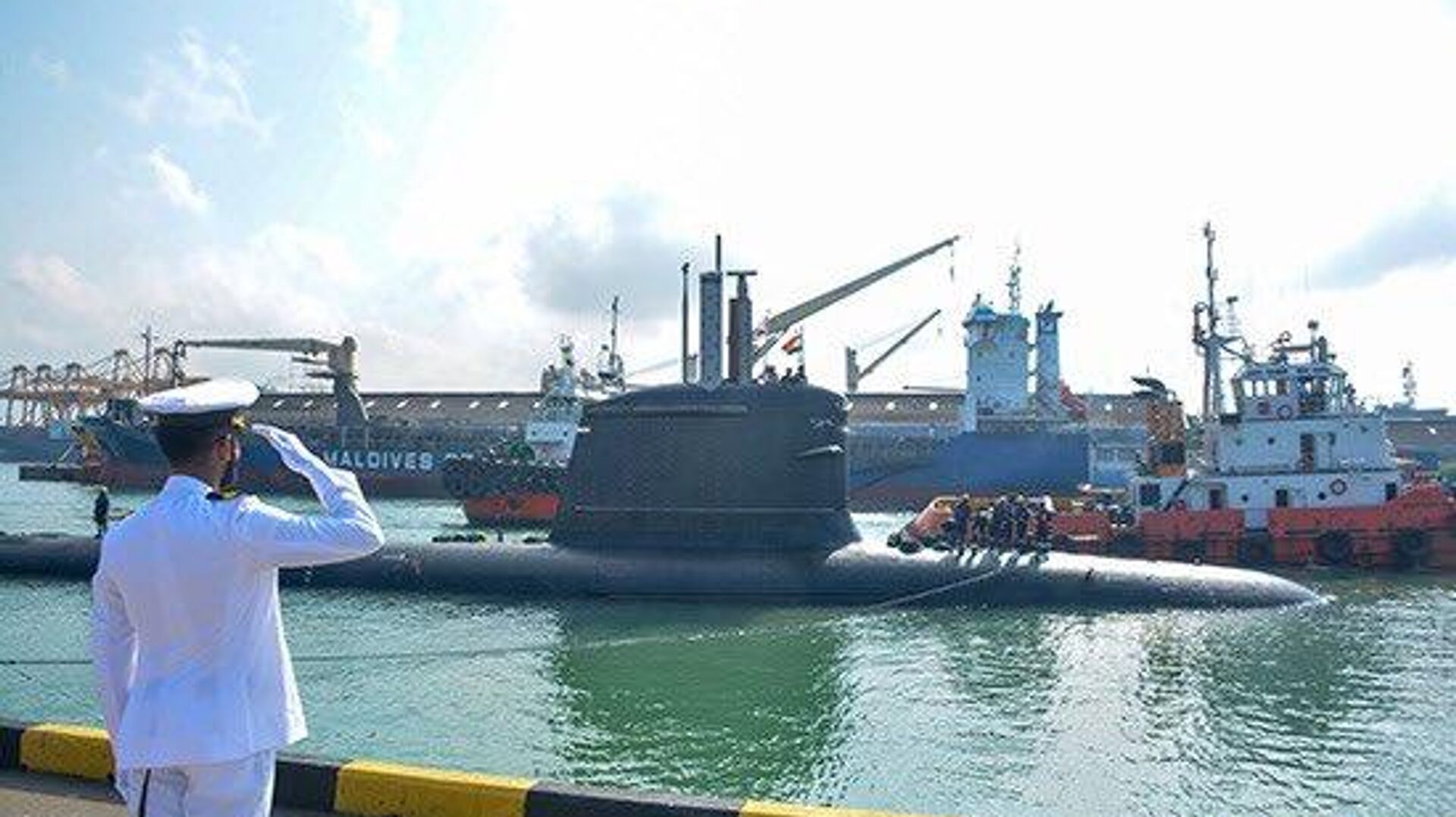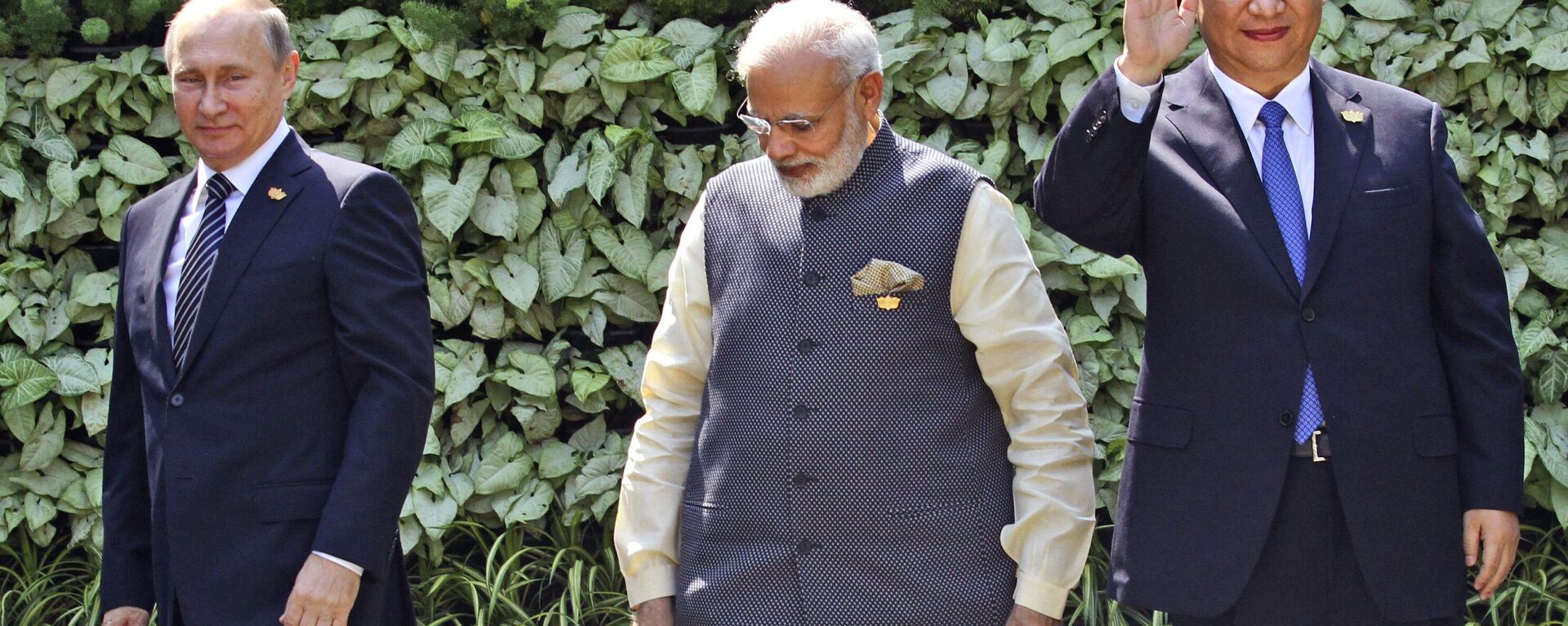https://sputniknews.in/20250103/how-indian-subs-will-turn-into-underwater-fighters-after-being-armed-with-aip-ehwts-8621608.html
How Indian Subs Will Turn Into ‘Underwater Fighters’ After Being Armed With AIP, EHWTs
How Indian Subs Will Turn Into ‘Underwater Fighters’ After Being Armed With AIP, EHWTs
Sputnik India
The Indian Navy is rapidly modernising its fleet of submarines, with a high-profile contract to equip its conventional underwater vessels with an indigenous... 03.01.2025, Sputnik India
2025-01-03T18:47+0530
2025-01-03T18:47+0530
2025-01-03T18:47+0530
defenсe news
indian navy
anti-submarine warfare
submarine
indian ocean
bengaluru
india
ministry of defence (mod)
delhi
new delhi
https://cdn1.img.sputniknews.in/img/07e8/02/04/6439891_0:28:550:337_1920x0_80_0_0_fd0d20f6e655089f438672fd2b3fd2b3.jpg
The integration of an indigenous Air Independent Propulsion (AIP) system and Electronic Heavy Weight Torpedoes (EHWT) into Indian submarines would transform them into advanced and modern "underwater fighter jets", experts have said.Earlier, the Indian Ministry of Defence (MoD) inked two agreements, worth INR 2,867 crore (approximately $334 million), for building an Air Independent Propulsion Plug and its incorporation on board Indian submarines, besides arming them with Electronic Heavy Weight Torpedoes.AIP technology enables submarines to operate without surfacing for extended periods, enhancing their stealth and operational endurance.Traditional diesel-electric submarines need to surface or use a snorkel to recharge batteries, increasing the risk of detection. With AIP, these submarines can remain submerged longer, reducing detectability and improving mission effectiveness.On the other hand, Bengaluru-based defence commentator Girish Linganna reckons that a key advantage of the AIP system is that it makes submarines quieter by reducing their noise levels, which significantly lowers the chances of detection by sonar systems, allowing them to surprise enemy ships or evade counter measures.Meanwhile, Banerjee believes that the induction of domestically developed EHWTs into India's submarine fleet substantially enhances its underwater combat capabilities as these torpedoes are designed to engage enemy submarines and surface vessels with high precision, featuring advanced guidance systems and robust propulsion.Linganna echoes Banerjee's views on EHWTs, underlining that one of the biggest advantages of these torpedoes is their extended range and speed, allowing submarines to attack targets from a safe distance while reducing the chances of being detected.This feature gives the submarines a clear tactical edge during naval operations. Additionally, the torpedoes are designed with safety measures to prevent accidental explosions, ensuring the safety of the crew and the submarine, he elaborated.
https://sputniknews.in/20241231/geopolitical-events-that-shaped-2024--predictions-for-2025-8616994.html
indian ocean
bengaluru
india
delhi
new delhi
Sputnik India
feedback.hindi@sputniknews.com
+74956456601
MIA „Rossiya Segodnya“
2025
Pawan Atri
https://cdn1.img.sputniknews.in/img/07e6/0c/13/139630_147:0:831:684_100x100_80_0_0_8fa2b25903e7787fe6a2698552c167df.png
Pawan Atri
https://cdn1.img.sputniknews.in/img/07e6/0c/13/139630_147:0:831:684_100x100_80_0_0_8fa2b25903e7787fe6a2698552c167df.png
News
en_IN
Sputnik India
feedback.hindi@sputniknews.com
+74956456601
MIA „Rossiya Segodnya“
Sputnik India
feedback.hindi@sputniknews.com
+74956456601
MIA „Rossiya Segodnya“
Pawan Atri
https://cdn1.img.sputniknews.in/img/07e6/0c/13/139630_147:0:831:684_100x100_80_0_0_8fa2b25903e7787fe6a2698552c167df.png
indian navy, anti-submarine warfare, submarine , indian ocean, bengaluru, india, ministry of defence (mod), delhi, new delhi, drdo, warship
indian navy, anti-submarine warfare, submarine , indian ocean, bengaluru, india, ministry of defence (mod), delhi, new delhi, drdo, warship
How Indian Subs Will Turn Into ‘Underwater Fighters’ After Being Armed With AIP, EHWTs
The Indian Navy is rapidly modernising its fleet of submarines, with a high-profile contract to equip its conventional underwater vessels with an indigenous Air Independent Propulsion (AIP) system being inked earlier this week.
The integration of an indigenous Air Independent Propulsion (AIP) system and Electronic Heavy Weight Torpedoes (EHWT) into Indian submarines would transform them into advanced and modern "underwater fighter jets", experts have said.
Earlier, the Indian Ministry of Defence (MoD) inked two agreements, worth INR 2,867 crore (approximately $334 million), for building an Air Independent Propulsion Plug and its incorporation on board Indian submarines, besides arming them with Electronic Heavy Weight Torpedoes.
"The AIP technology is being indigenously developed by DRDO. The project pertaining to construction of AIP-Plug and its integration will enhance the endurance of conventional submarines and significantly contribute towards the 'Aatmanirbhar Bharat' initiative", the MoD's statement read.
AIP technology enables submarines to operate without surfacing for extended periods, enhancing their
stealth and operational endurance.
Traditional diesel-electric submarines need to surface or use a snorkel to recharge batteries, increasing the risk of detection. With AIP, these submarines can remain submerged longer, reducing detectability and improving mission effectiveness.
"This development aligns with India's 'Aatmanirbhar Bharat' initiative, emphasising self-reliance in defence technologies. The Defence Research and Development Organisation (DRDO) has been instrumental in developing this indigenous AIP system, which will be integrated into the submarines during their refit schedules. This enhancement transforms conventional Indian submarines into formidable 'underwater fighters', capable of extended operations with increased stealth, thereby strengthening India's maritime security," naval historian Aritra Banerjee told Sputnik India.
On the other hand, Bengaluru-based defence commentator
Girish Linganna reckons that a key advantage of the AIP system is that it makes submarines quieter by reducing their noise levels, which significantly lowers the chances of detection by sonar systems, allowing them to surprise enemy ships or
evade counter measures.
"By equipping submarines with AIP, the Indian Navy enhances their ability to perform missions like anti-submarine warfare, anti-surface warfare, and intelligence gathering more effectively and efficiently," Linganna said in a conversation with Sputnik India.
Meanwhile, Banerjee believes that the induction of domestically developed EHWTs into India's submarine fleet substantially enhances its underwater combat capabilities as these torpedoes are designed to engage enemy submarines and surface vessels with high precision, featuring advanced guidance systems and robust propulsion.
Linganna echoes Banerjee's views on EHWTs, underlining that one of the biggest advantages of these torpedoes is their extended range and speed, allowing submarines to attack targets from a safe distance while reducing the
chances of being detected.
This feature gives the submarines a clear tactical edge during naval operations. Additionally, the torpedoes are designed with safety measures to prevent accidental explosions, ensuring the safety of the crew and the submarine, he elaborated.
"When combined with the Air Independent Propulsion system, these torpedoes transform the country's submarines into powerful underwater units. These submarines are now capable of carrying out various missions such as anti-submarine warfare, anti-surface warfare, and intelligence gathering. The advanced propulsion system and weaponry provide greater flexibility, stealth, and striking power, making the submarines much more effective in their operations", Linganna concluded.



